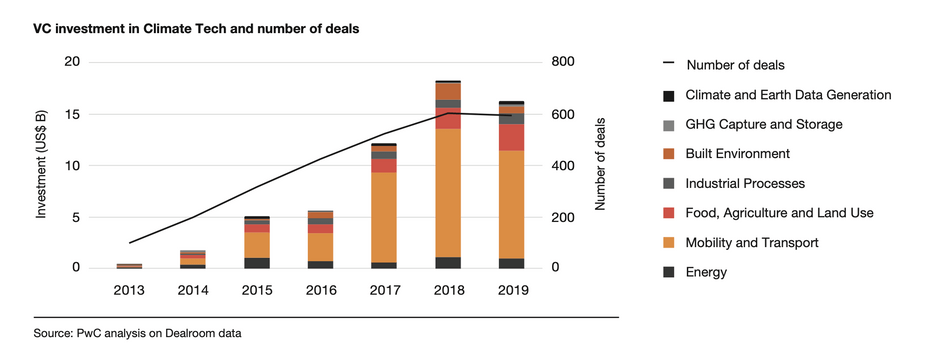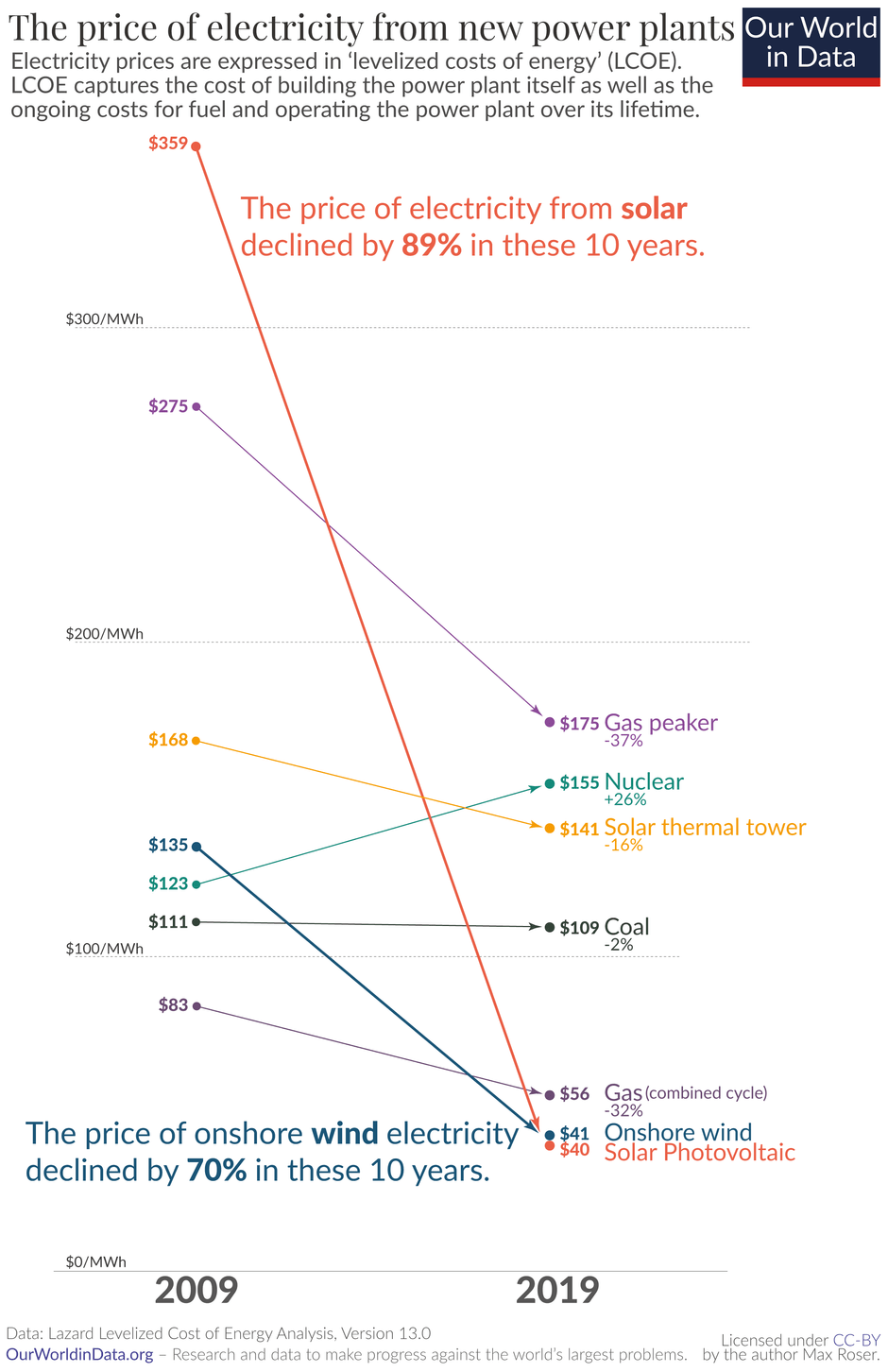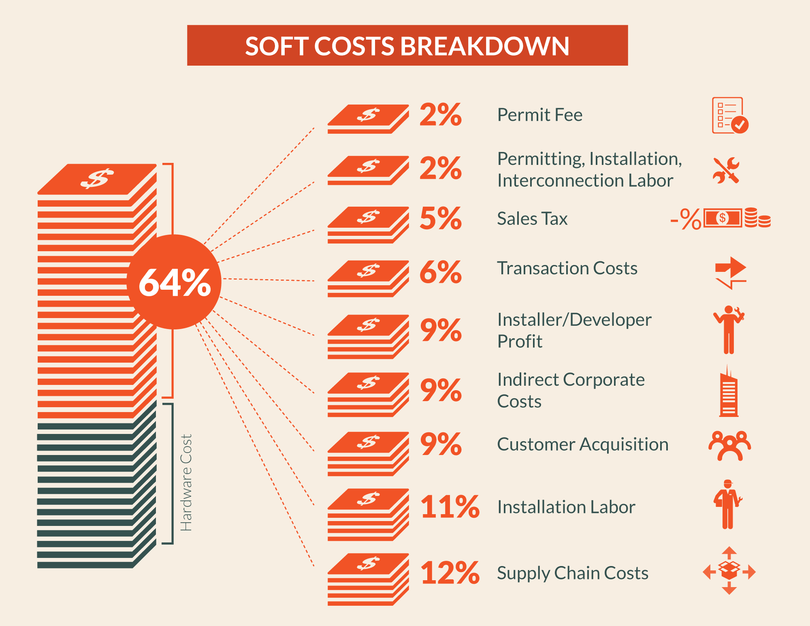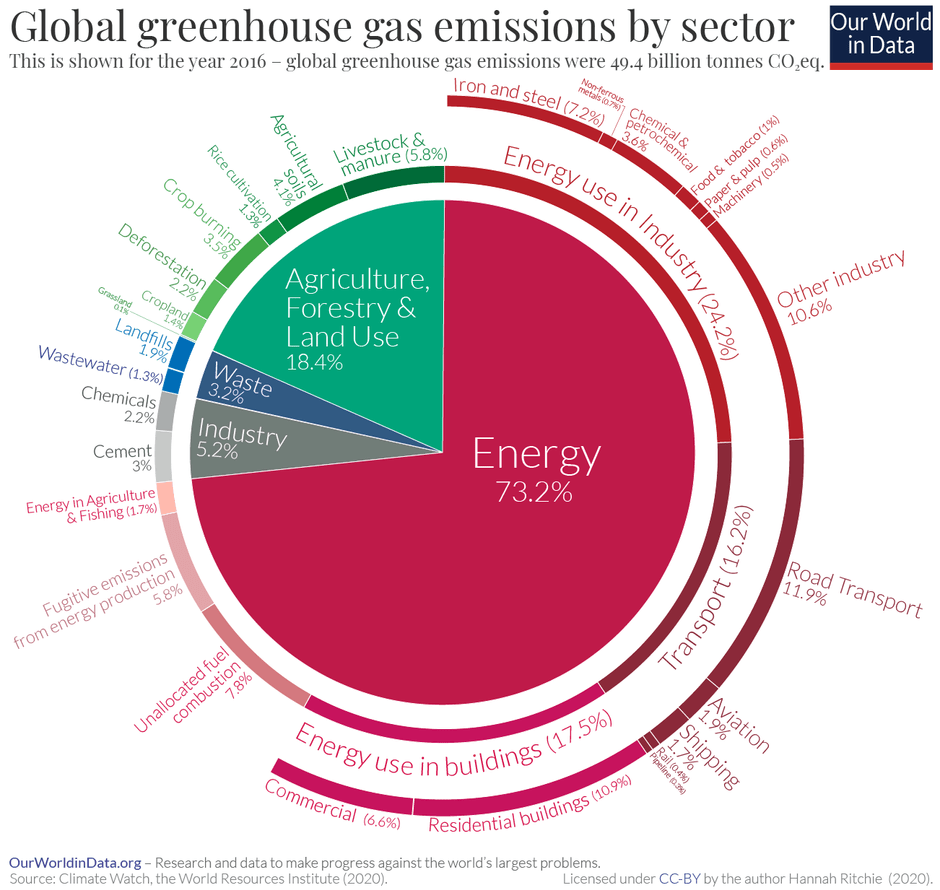12 months ago I left my excellent job in an enterprise AI startup and started understanding how to apply ML to climate change. I’ve worked with 4 organizations in the past year, and I’m convinced that there’s lots of demand in this sector for good data scientists – and that more people should take the leap.
If you’re a programmer with a flair for statistics who’s wondering about working on the most urgent problem of our generation, read on.
The objective function is clear
Machine learning experts love a crisply defined differentiable loss function. Sadly the real world rarely obliges. Instead, you’re often left optimizing some ill defined blend of what-your-boss-wants, what-customers-find-intuitive, and whatever-we-can-measure.
I’m here to tell you that the climate gang have figured out a key metric we can all run at: temperature change.
And if that’s a bit hard to differentiate, they’ve got another good one: CO2. For most organizations the relevant number is how much CO2 they’re emitting, in something like tons per year.
The beauty of this is that this gives everybody working on the problem a completely fungible measure for quantifying their impact. If you’re a 5 person company in Manchester and you can figure out how to prevent 500 tons of CO2 from entering the atmosphere, you have 5x the impact of a 100 person company in NYC who prevented the emissions of 100 tons of CO2. And per person, your impact is 25x.
I don’t know of any other challenge where we can so crisply compare the positive impact of organizations and individuals.
We’re at the cusp of a takeoff
Climate tech is exploding in importance and there’s never been a better time to jump on board.
Extreme weather events are getting more frequent and more intense. In the wake of coronavirus there’s new enthusiasm from governments, financial institutions, and companies to tackle global issues. The recently released IPCC report is the most emphatic warning the world has received yet.
And the venture capital system has responded: funding in the area is growing rapidly. A recent report from PwC dropped this bombshell
…we see an 84% compounded annual growth rate (CAGR)in total capital deployed. This represents almost five times the growth rate of the wider VC industry, where investment grew at just 18% annually. It also is on the order of 3 times the growth rate of VC investment into AI, during a time period renowned for its uptick in AI investment
The State of Climate Tech 2020: PwC
If you think that climate tech isn’t sexy, checkout the seriously well-branded work going on at Pachama, Watershed, and Tomorrow. You don’t have to choose between a fun startup experience and saving the world; you can have your cake and eat it too (as long as it’s 100% plant-based, obviously).
The hardware folks have made amazing progress
If you grew up in the 90’s, you were probably vaguely aware of climate change and the need for a transition to renewable energy, but you might have had the sense that all of the available options were a bit… crap.
It turns out that solar has its own version of Moore’s law, and wind isn’t far behind either. Renewable energy is now the cheapest source of power in many parts of the world, and solutions for energy storage, electric heating, and electric transportation have all improved by more than an order of magnitude since you were at school.
The challenge for many of these technologies is shifting from “make it feasible” to “make it effortless”, and that’s the role of software people like you and I.
For example, 64% of the costs of a solar installation are so called “soft costs” – which are basically problems amenable to software, like sales, getting the relevant permits, and design. Manufacturing the chunk of glass and the associated electronics has fallen so fast in cost that they now comprise just 36% of the cost.
Similarly, battery prices are now sufficiently low that that it’s profitable for operators to connect them to the grid. But now there’s the challenge of operating those batteries efficiently, charging and discharging them to optimize utility (and profit), whilst maintaining lifespan. That’s what companies like Habitat are focused on (I worked for them, they’re great).
There’s also a slew of really hard system-level problems that we need to solve to go from ~20% renewable energy to ~80%. Some of those are hardware related (e.g. more batteries), but many are software. The grid is a dynamic system that needs precise control, and that’s more challenging when your generation is unpredictable (see this great talk, featuring Priya Donti).
What next?
If you’re anything like me, the biggest barriers to moving into climate tech are feeling you:
- Don’t know anybody who’s doing it
- Aren’t sure if the jobs exist
- Are ignorant about climate change and bashful about wanting to work on it
Here’s how I overcame all three.
Find a community
Perhaps like you, I’m a fairly independent nerd who spends plenty of time tinkering with things and wishing people would leave me alone.
However, I (and presumably you) am also human, and it’s a lot easier for me to stick to scary plans and take risks if I’m part of a team.
Finding an online community was hugely helpful for me. I was fortunate enough to join Work On Climate when it was fairly small, and I got a lot of valuable advice from co-founder Eugene (who had left his job at Google to focus on climate).
Other communities which I’ve heard good things about:
If you’re in the target audience for this piece, you will probably find it excruciatingly awkward to join and introduce yourself in these forums. Please persevere. It’s really worth it.
Find the jobs
There are now multiple excellent job boards for people looking for jobs in climate.
The ones I’m aware of are:
But I’m sure there are many more by the time you’re reading this.
Subscribing to a few newsletters will also help you spot new opportunities. I like:
Another tactic is to take a look at the money flowing into climate tech startups, and follow it to the jobs. CTVC has regular updates of who is getting funded to do what. You can also keep an eye on the big funds like Pale Blue Dot, Breakthrough Energy, and Lowercarbon Capital. Again, CTVC has a good list (the third mention I’m giving them, you should probably subscribe).
Find the knowledge
Firstly: try not to worry too much about how little you know about climate change. It’s a massive topic and any organization you end up working with will probably be focused on a tiny specific corner of it – and they’ll teach you about it- so it’s not worth trying to become an expert in everything.
Just as in every other software or data role, your value add is not pure domain expertise – although hopefully you accrue it. There will be PM’s, analysts, and perhaps full time research scientists to help you understand the sphere you’re operating in.
Furhermore, decarbonization basically touches every sector of the economy. We need to work on food, on transport, on heating, on clothing… on all of it. So whatever you know already, there’s probably a climate lens you can apply to it.
All that being said: knowing the terrain a little will help you pick the most impactful companies to work on, and spot the snakeoil (but you work with AI, you’re used to snakeoil, right?).
Here are four resources, organized from light to heavy:
- A Pragmatic Guide to Climate Change from Tomorrow. A nice interactive blogpost offering a decent overview
- Bill Gates’s book is pretty good, and quite comprehensive: as you’d expect from the Übernerd, it’s very quantitative and apportions attention to the right sectors
- Rewiring America is a free ebook from a maverick engineer Saul Griffiths, who’s really into the idea of electrifying everything
- Sustainable Energy Without The Hot Air is an epic read from David MacKay, who you might know from his excellent statistics textbook
There are also some excellent podcasts:
- How To Save A Planet from Gimlet: light, informative, high quality storytelling from the team that created the fabulous Startup podcast. Suggested episode: the one on food.
- Reversing Climate Change from Nori: in depth interviews with entrepreneurs and scientists in the carbon remove space. Suggested episode: Carbon neutral cement with CarbonCure.
- My Climate Journey: interviews in an attempt to learn the space. I haven’t listened to this but it’s highly recommended by people I trust. Suggested episode: Tobi Lutke from Shopify.
- Energy vs Climate: more policy focused, with a Canadian lens. Suggested episode: Are Nature-based Solutions a Natural Policy Choice?
Finally
A shameless plug: I’m hiring Data Scientists at CarbonChain. If you’re interested in that role, or if there’s any other way I can help you apply your skills to climate work, please reach out.



